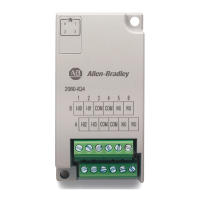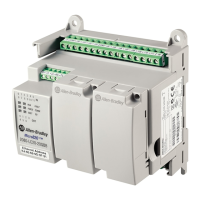16 Rockwell Automation Publication PFLEX-AT001L-EN-P - September 2017
Chapter 2 Determining Dynamic Brake Requirements
Record Rated Regenerative Power:
For the purposes of this document, it is assumed that the motor used in the
application is capable of producing the required regenerative torque and power.
Step 3 – Minimum Power Requirements for the Dynamic Brake
Resistors
It is assumed that the application exhibits a periodic function of acceleration and
deceleration. If
(t
3
– t
2
) equals the time in seconds necessary for deceleration from
rated speed to
o
speed, and t
4
is the time in seconds before the process repeats
itself, then the average duty cycle is
(t
3
– t
2
)/t
4
. The power as a function of time is a
linearly decreasing function from a value equal to the peak regenerative power to
some lesser value after
(t
3
– t
2
) seconds have elapsed. The average power regenerated
over the interval of
(t
3
– t
2
) seconds is:
P
av
= Average dynamic brake resister dissipation (watts)
t
3
– t
2
= Deceleration time from
b
to
o
(seconds)
t
4
= Total cycle time or period of process (seconds)
P
b
= Peak braking power (watts)
b
= Rated angular rotational speed
o
=Angular rotational speed,
less than rated speed down to zero
P
rg
=
IMPORTANT If application cycle time exceeds 900 seconds, for calculation purposes
t
4
will be equal to 900 plus the decel time. This is because the resistor
will have cooled completely after 15 minutes.
If t
4
> 900 then t
4
= 900 + (t
3
- t
2
).
P
b
2
------
b
o
+
b
------------------------
Rad
s
----------
Rad
s
----------

